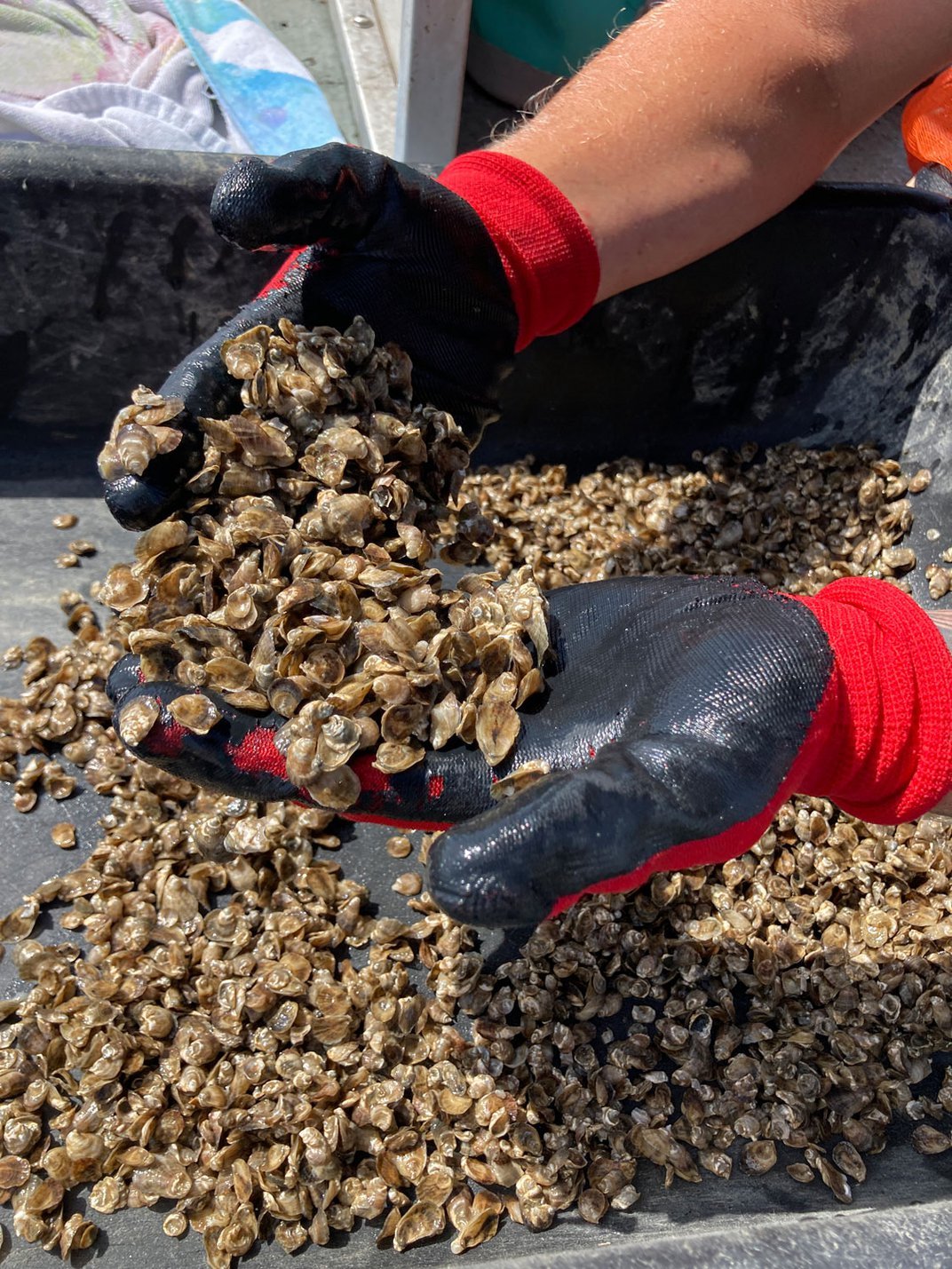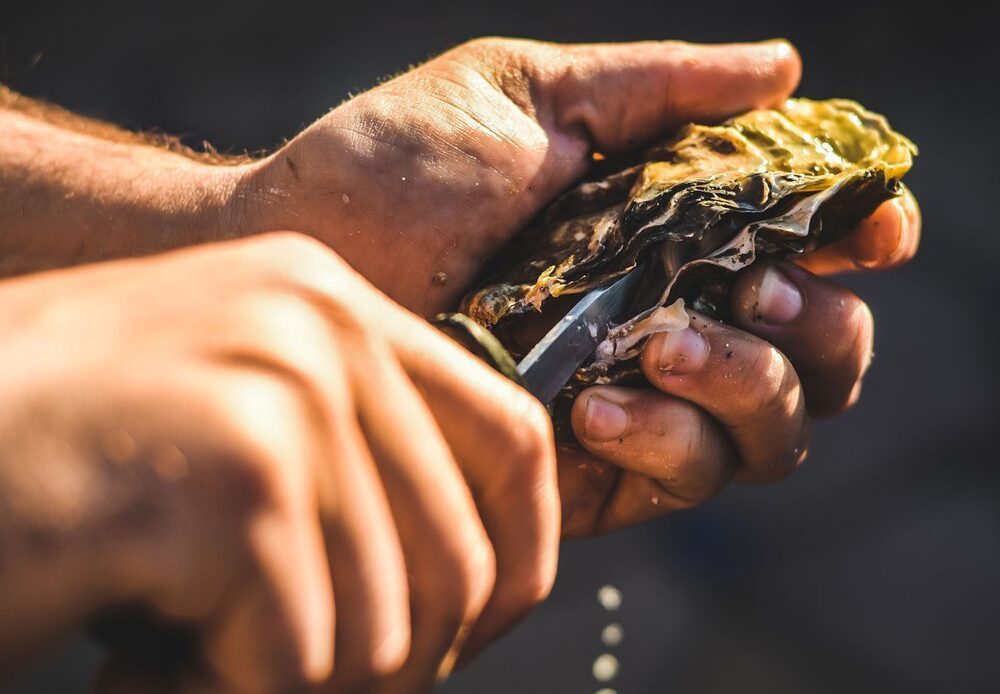As the North Carolina farmed oyster industry grows, advocates hope to fuel consumer demand and build the industry’s profile with a tourism “trail.”
Cody Traxler/Shutterstock
Cody Faison stands up to his chest in a marsh off the Intracoastal Waterway along North Carolina’s coast, holding a basket-like cage full of oysters. He shakes it back and forth in the water, spraying salty droplets into the air. The motion chips off some of the oysters’ new growth, encouraging their naturally oblong shells to take on the rounder, deeper form favored by his buyers. He’ll repeat the process up to 20 times over each oyster’s life cycle.
Faison finishes shaking; pale flecks of shell and silt float around him. He opens the cage and studies one of the bivalves. “Look at this shape,” he says, pointing at the round shell with its gnarled surface. “It’s incredible.”
Cody and his wife, Rachel Faison, are newcomers to the burgeoning farmed oyster industry in North Carolina. When it comes to seafood, the state has historically been better known for blue crab and fish such as flounder, mackerel, and bass. But the North Carolina fishing sector has struggled over recent decades due to a complex swirl of factors. Wild fish stocks have dwindled, as they have in so many places around the world, leaving coastal communities with less seafood and fewer jobs. Much local fish is exported out of North Carolina to other higher-paying U.S. markets; coastal dwellers and visitors often end up eating fish imported from other countries instead, which in turn undercuts the price of any locally caught fish that might be available. Some fishers claim that strict state and federal regulations designed to conserve stocks undermine their livelihoods even more. As a result, the number of commercially licensed fishers in the state who actually used their licenses declined by about half between 2000 and 2021.
Cody Faison holds handfuls of juvenile oysters on his farm in North Carolina during a tour in late August 2021. These “seeds” float in the water within a cage and slowly mature until they’re ready for market. Emily Cataneo
Enter oyster farming. This practice has emerged as a solution that supporters promise will increase the amount of affordable local seafood and create…
Click Here to Read the Full Original Article at Travel | smithsonianmag.com…
